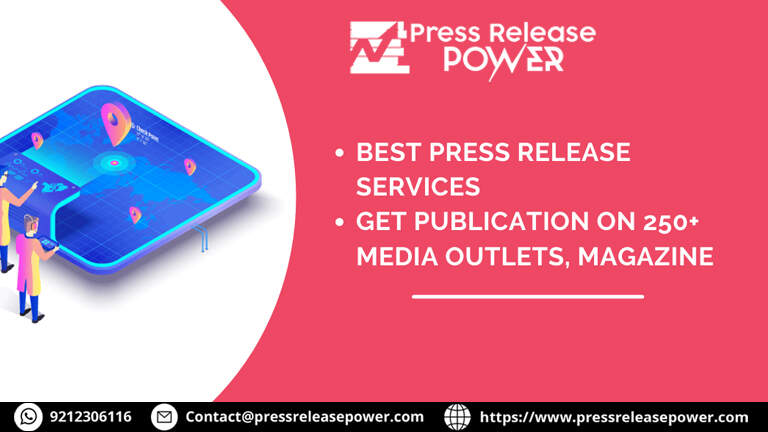10 Unexpected Press Release Distribution Tips
IntroductionIf you're like me, then you'll often find yourself sitting in front of your computer screen reading press releases sent by different organizations and businesses. Sometimes it's just to see if they have anything interesting or newsworthy, but other times I find myself scrolling through them just because they look so exciting! As a journalist who covers the world of PR and marketing, I've compiled these 10 tips on how to distribute your own press release:
Tip #1: Write for your audience – don't just write a press release for the media.
Writing for your audience means writing for yourself and not just the media.
You should be clear, concise, and use simple language. Avoid jargon if possible; use subheads to break up content; don’t use all caps; avoid using too many new words or expressions – it will make it harder for anyone other than native English speakers to understand what you are saying!
When writing a press release distribution services, try quoting someone who has insight into the company (or industry) as well as their own opinions on why they think your product/service is great (or not so great). You can even quote an expert who has experience with similar products or services in order to give credibility to your story when pitching journalists at trade shows or conferences where there may not be anyone who knows much about what you do yet either way it adds interest because it makes people want more information about what makes this particular business stand out from others currently operating within its niche market space."
Tip #2: Make the headlines and subheads attention-grabbing, yet relevant to your story. Do not use all caps.
Headlines should be short and to the point, with a clear hook that draws in readers' attention before they even start reading the body copy. Bolding is also recommended here—it grabs attention even more effectively than italics or underlining (especially if you're using boldface for headlines throughout your piece). And don't forget about DOs and DON'Ts when it comes to typography: DON'T use ALL CAPS; DO use SHARP SERIFS; DO use ROMAN LETTERS instead of UPPER AND LOWER CASE IN ALL CAPS...you get my drift!
Your subheadings will help explain what follows in greater detail while still keeping things concise enough so as not to lose anyone along the way by being too long-winded or wordy (and then again we get back into those same old "don't do this" rules).

Tip #3: Use your first paragraph to explain the "who, what, why, when and where."
Your first paragraph should explain the who, what, why, when and where of your best press release distribution services.
Who: You. The company or person sending it out.
What: The product or service you offer (i.e., "We’re launching our first line of designer sunglasses.")
Why: It's important to give readers a reason why they would be interested in reading about your newsworthy items—even if it's just because they love fashion!
When: Your date for when this happened (e.g., “On June 1st we opened our new store in New York City"). Don't forget to include any relevant dates such as holidays or events that might affect sales numbers such as Black Friday discounts at retail stores around America."
Tip #4: Keep your press release short (1-2 paragraphs) with each paragraph containing 3-5 sentences max.
The press release is a great tool for getting your message out there. But it can also be a burden to write, so here are some tips on how to make the process easier:
Keep your best press release distribution services 2023 short and sweet. Each paragraph should contain 3-5 sentences, with each sentence being no longer than 2 sentences (3 if you're feeling especially brave). This helps keep things from getting too long and makes it easier for journalists to read through all of your points in one sitting without needing breaks or distractions. It also keeps things organized by putting them into logical groups so that when reading through them, you don't need much time at all before reaching the end of your article!
Use bullet points instead of paragraphs—use bullets wherever possible! They make reading easier because they break up long blocks of text into smaller chunks that can be easily skimmed over if necessary while still retaining their meaning within those particular sections/sentences/etc.. This means less chance for mistyping while making sure everything gets across clearly enough so as not cause confusion among readers who may otherwise have difficulty understanding exactly what was being said due either due lack knowledge thereof; lack comprehension skills; etc..
Avoid jargon words unless absolutely necessary - If there are certain words used regularly but not everyone knows what they mean - then use those ones sparingly since most likely noone will know about them yet anyway ;-)...
Tip #5: When possible, include quotes in your press release.
When possible, include quotes in your press release. Quotes can be used to add credibility to your online press release distribution and provide more information than simply a list of words. They should be relevant and succinct—the average person doesn't have time for long-winded anecdotes or explanations about why they're relevant to the topic of your article/blog post/website page.
If you're writing about an event or topic that relates specifically to one person's experience (i.e., "the best place we went was..."), try including their name so readers know who they are talking about when they read this part! If it's more general—like "a great way we found out about cool events happening around town"—include names only if they'll help make sense of what's being said after reading through all those facts first (and remember: no matter how many times you've read something before...it always helps when someone says something clearly!).
Tip #6: Write in the third person. For example, say "ABC Company wins award," rather than "We won an award."
The third person is a good choice for top press release distribution services because it can make it easier to focus on your message and avoid any confusion. Avoid using first person pronouns, like "I" or "me." Instead, use the active voice: "ABC Company wins award," rather than "We won an award."
This technique helps you avoid passive voice (i.e., words that do not directly describe who or what is doing something), which can be confusing for readers and make them lose track of what you're saying. You also want to make sure that whoever's reading your release knows who exactly would benefit from reading it: maybe someone at ABC Company doesn't know about their latest media opportunity! By writing in the third person instead of first person plural ("we"), this problem will not occur as often as if everyone were referring back only onto themselves individually—which would lead us back into another very important tip...
Tip #7: Be sure that you have contact information on your press release. This includes phone number and email.
If you want to be sure that your press release is distributed, it’s important that you include contact information on every page. This includes phone number and email address.
You should do this even if you have a small company or are self-distributing your press release yourself. The more people who know how to contact you in case they see something interesting, the better! You can also include this information at the top of each page: “For further information about our services and products…” Then again at the bottom: “If interested in learning more about our services…” Finally, consider putting it somewhere on every other side as well!

Tip #8: Personalize your pitches to relevant journalists whenever possible, instead of using a generic template or subject line like "MEDIA ALERT" or "PRESS RELEASE."
Personalize your pitches to relevant journalists whenever possible, instead of using a generic template or subject line like "MEDIA ALERT" or "PRESS RELEASE."
When you're sending out local press release distribution, it's important to keep in mind that journalists receive hundreds of emails each day from reporters everywhere. If you don't personalize your pitch, they may not take the time to glance at yours—and if they don't see any connection between their story and yours (or if they can't remember who wrote it), no matter how intriguing the topic is for them personally, it could mean that your message goes unheard by many readers who would otherwise appreciate its content.
Tip #9: Avoid jargon or overly technical words unless absolutely necessary, and be sure to spell check and proofread.
It's important to avoid using words that could confuse your audience or be too technical. If a word is too long, it will take up valuable space on the page. If it's short and hard to spell, chances are you're going to lose readers as they struggle with what they're looking at.
Finally, when writing press releases make sure you proofread them before sending them off!
Tip #10: Follow up! Journalists receive countless pitches every day from sources. Set up a follow up phone call or drop by the newsroom to see if they need more information about the topic and if it's a good fit for them (and their audience).
The last tip is to follow up! Journalists receive countless pitches every day from sources. Set up a follow up phone call or drop by the newsroom to see if they need more information about the topic and if it's a good fit for them (and their audience). If you're pitching an article, don't be afraid to follow up multiple times until you get some kind of response—even if it's just "no" or "not right now." Be persistent and keep pitching until something happens!
You never know when someone might come back into your life as part of another project that could use some white label press release distribution help, so don't hesitate to reach out again after receiving negative feedback on one pitch—or even after getting turned down once!
Conclusion
The choice is yours. Do you want to be a journalist, or do you want to pitch your story? The choice is yours.
Get in Touch with us!
Website –https://www.pressreleasepower.com/
Skype – shalabh.mishra
Telegram – shalabhmishra
Whatsapp – +919212306116
Email –contact@pressreleasepower.com
Mobile – +91-9212306116